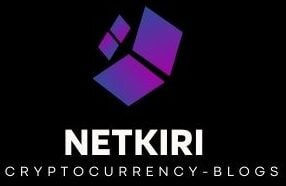The blockchain ecosystem is constantly evolving, with new projects and technologies emerging to address scalability, interoperability, and security challenges. Among the various solutions proposed, Layer 1 protocols play a crucial role in laying the foundation for decentralized applications (dApps) and smart contracts. Ethereum, Polkadot, and Solana are three prominent Layer 1 solutions, each offering unique features and capabilities. In this article, we’ll delve into the intricacies of these platforms, comparing their architectures, consensus mechanisms, performance, and potential use cases.
Table of Contents
Ethereum: The Pioneer of Smart Contracts
Ethereum, launched in 2015 by Vitalik Buterin, remains the most widely adopted blockchain platform for deploying smart contracts and decentralized applications. It introduced the concept of smart contracts, enabling developers to create programmable agreements that execute automatically when predefined conditions are met. Ethereum operates on a proof-of-work (PoW) consensus mechanism, similar to Bitcoin, where miners compete to validate transactions and secure the network.
However, Ethereum’s PoW consensus model has faced criticism due to its scalability limitations and high transaction fees during periods of network congestion. To address these issues, Ethereum is transitioning to Ethereum 2.0, a major upgrade that will implement a proof-of-stake (PoS) consensus mechanism, known as the Beacon Chain. This transition aims to improve scalability, reduce energy consumption, and enhance network security.
Despite these improvements, Ethereum continues to face scalability challenges, especially as the demand for decentralized finance (DeFi) applications and non-fungible tokens (NFTs) grows. Nevertheless, Ethereum remains a dominant force in the blockchain space, with a vast developer community and a wide range of use cases spanning DeFi, NFTs, gaming, and more.
Polkadot: Interoperability and Scalability
Polkadot, founded by Dr. Gavin Wood, one of Ethereum’s co-founders, aims to address the scalability and interoperability challenges facing blockchain networks. Unlike Ethereum, which operates as a single blockchain, Polkadot is a heterogeneous multi-chain network that enables different blockchains to interoperate seamlessly. Polkadot’s architecture consists of a relay chain, parachains, and bridges, facilitating cross-chain communication and interoperability.
The relay chain serves as the main chain in the Polkadot network, coordinating consensus and security among parachains. Parachains are independent blockchains that connect to the relay chain, each specializing in specific use cases or applications. This architecture allows for greater scalability and flexibility, as new parachains can be added to the network without disrupting existing chains.
Polkadot utilizes a hybrid consensus mechanism called nominated proof-of-stake (NPoS), where token holders nominate validators to secure the network and earn rewards. This consensus mechanism ensures security while allowing for high transaction throughput and fast finality.
Polkadot’s focus on interoperability and scalability makes it well-suited for a wide range of applications, including DeFi, decentralized exchanges (DEXs), supply chain management, and identity verification. Its interoperability features enable seamless communication between different blockchains, unlocking new possibilities for cross-chain applications and asset transfers.
Solana: High-Performance Blockchain
Solana stands out as a high-performance blockchain designed for scalability and speed. Founded by Anatoly Yakovenko, a former engineer at Qualcomm, Solana leverages a unique combination of technologies to achieve high throughput and low latency. Solana’s architecture is built around a novel consensus mechanism called proof-of-history (PoH), combined with a proof-of-stake (PoS) consensus model.
Proof-of-history (PoH) is a cryptographic technique that orders transactions before they are processed by the network, enabling Solana to achieve high throughput and fast finality. This approach reduces the need for communication between nodes, allowing Solana to scale horizontally as the network grows.
Solana’s performance capabilities have garnered significant attention from developers and users alike, especially in the realm of decentralized finance (DeFi) and non-fungible tokens (NFTs). Its ability to support thousands of transactions per second with sub-second confirmation times makes it ideal for high-frequency trading and real-time applications.
Despite its impressive performance, Solana faces challenges in achieving decentralization and maintaining network security. As the network grows, the number of validators may become more concentrated, potentially compromising decentralization. However, Solana’s team is actively working on solutions to address these concerns and ensure the long-term sustainability of the network.
Conclusion: Diverse Approaches to Blockchain Innovation
Ethereum, Polkadot, and Solana represent three distinct approaches to addressing the scalability, interoperability, and performance challenges facing blockchain networks. Ethereum paved the way for smart contracts and decentralized applications, but faces scalability limitations with its current proof-of-work consensus mechanism. Polkadot introduces a novel architecture for interoperability and scalability, enabling cross-chain communication and specialization. Solana offers high-performance capabilities, leveraging innovative consensus mechanisms to achieve fast transaction throughput and low latency.
Each of these platforms has its strengths and weaknesses, catering to different use cases and developer preferences. Ethereum remains the dominant platform for smart contracts and DeFi applications, while Polkadot and Solana offer alternative solutions for scalability and interoperability. As the blockchain ecosystem continues to evolve, these Layer 1 solutions will play a crucial role in shaping the future of decentralized technology.
Conclusion
In summary, exploring the intricacies of Ethereum, Polkadot, and Solana provides valuable insights into the diverse approaches to blockchain innovation and the potential impact on decentralized applications and the broader ecosystem.

